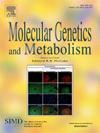肝外植体纤维化的患病率和尿素循环障碍患者的活检
IF 3.5
2区 生物学
Q2 ENDOCRINOLOGY & METABOLISM
引用次数: 0
摘要
背景尿素循环障碍(UCDs)患者出现各种形式肝脏疾病的报道越来越多。在这项研究中,我们对两个肝移植中心的大量肝移植样本和ucd患者的活检中纤维化和脂肪变性的患病率进行了首次系统和标准化的组织病理学评估。方法美国两家大型肝移植中心的两名病理学家使用标准评分系统对66例ucd患者的67份肝组织样本进行肝纤维化和脂肪变性分期。组织病理学结果与临床参数相关,包括UCD类型、实验室参数和影像学结果。结果总体而言,23% (n = 15)的个体表现出临床显著的肝纤维化(根据美他韦分期≥F2)。其中,12人被诊断为精氨酸琥珀酸裂解酶缺乏症(ASLD),导致该队列中80%的临床显著纤维化患病率。18%的患者(n = 12)患有小泡性和/或大泡性肝脂肪变性。没有临床参数包括常规实验室检查或影像学与ASLD患者肝纤维化有显著相关性。结论:在这项大规模的ucd肝脏组织病理学研究中,我们的发现表明ASLD中具有临床意义的肝纤维化的患病率很高。这些发现强调了监测肝病和促进ucd患者肝脏健康的重要性,并可能对ASLD患者的长期监测产生影响。本文章由计算机程序翻译,如有差异,请以英文原文为准。
Prevalence of fibrosis in hepatic explants and biopsies from individuals with urea cycle disorders
Background
Various forms of liver disease have been increasingly reported in individuals with urea cycle disorders (UCDs). In this study, we performed the first systematic and standardized histopathological assessment of the prevalence of fibrosis and steatosis in a large sample of hepatic explants and biopsies from individuals with UCDs at two liver transplantation centers.
Methods
Sixty-seven hepatic tissue samples from 66 individuals with UCDs were staged by two pathologists for hepatic fibrosis and steatosis using standard scoring systems at two large liver transplantation centers in the United States. Histopathological findings were correlated with clinical parameters, including UCD type, laboratory parameters, and imaging findings.
Results
Overall, 23 % (n = 15) of individuals demonstrated clinically significant hepatic fibrosis (≥ F2 according to Metavir staging). Of these, 12 were diagnosed with argininosuccinate lyase deficiency (ASLD) leading to an 80 % prevalence of clinically significant fibrosis in this disorder in this cohort. Eighteen percent of the patients (n = 12) had microvesicular and/or macrovesicular hepatic steatosis. No clinical parameters including routine laboratory testing or imaging were significantly associated with clinically significant hepatic fibrosis in individuals with ASLD.
Conclusion
In this large study of hepatic histopathology in UCDs, our findings demonstrate a high prevalence of clinically significant hepatic fibrosis in ASLD. These findings emphasize the importance of monitoring for liver disease and promoting liver health in UCDs and may have implications for long-term monitoring for individuals with ASLD.
求助全文
通过发布文献求助,成功后即可免费获取论文全文。
去求助
来源期刊

Molecular genetics and metabolism
生物-生化与分子生物学
CiteScore
5.90
自引率
7.90%
发文量
621
审稿时长
34 days
期刊介绍:
Molecular Genetics and Metabolism contributes to the understanding of the metabolic and molecular basis of disease. This peer reviewed journal publishes articles describing investigations that use the tools of biochemical genetics and molecular genetics for studies of normal and disease states in humans and animal models.
 求助内容:
求助内容: 应助结果提醒方式:
应助结果提醒方式:


